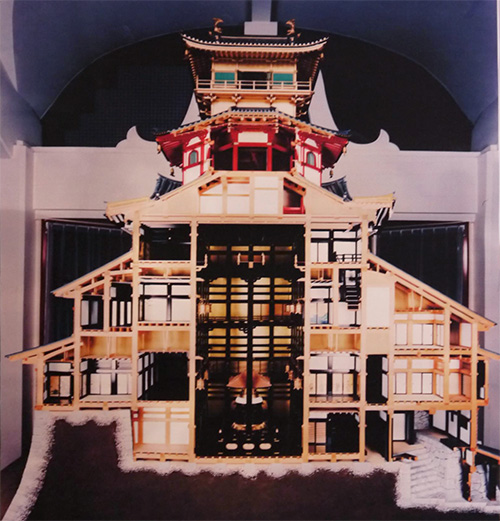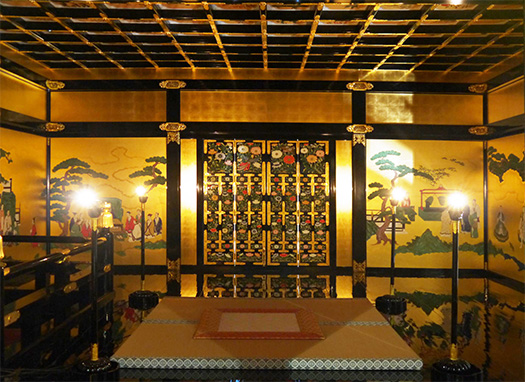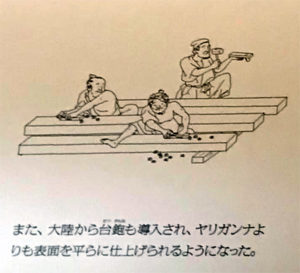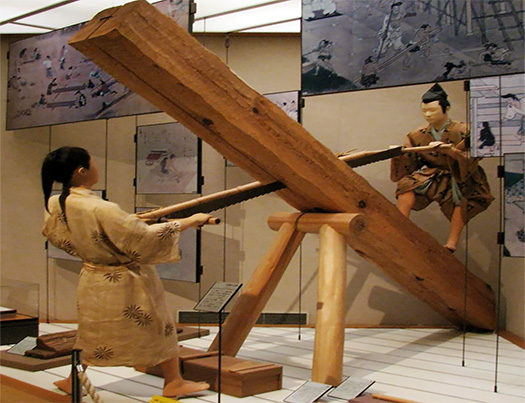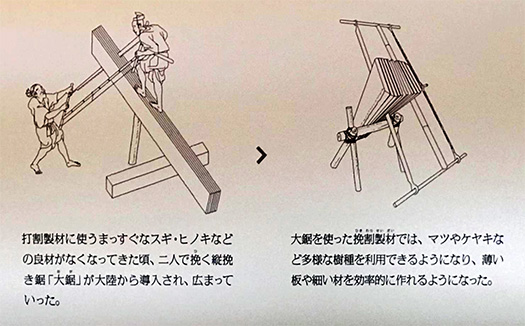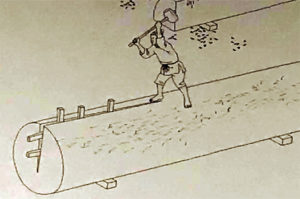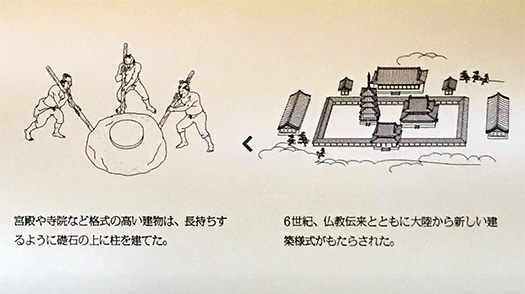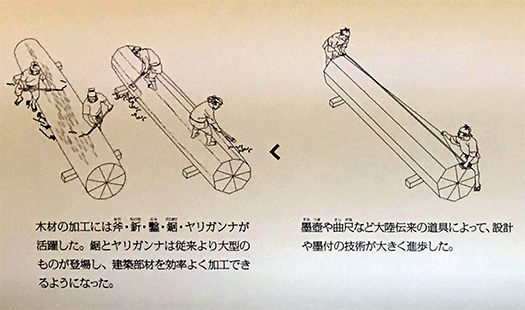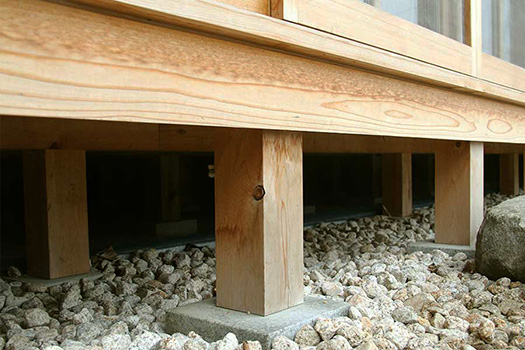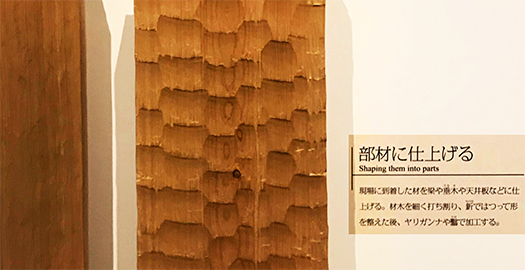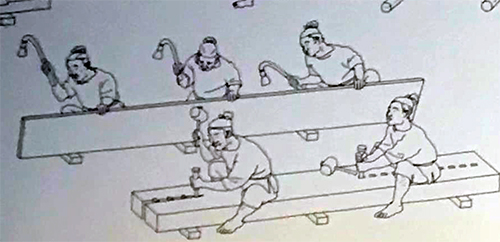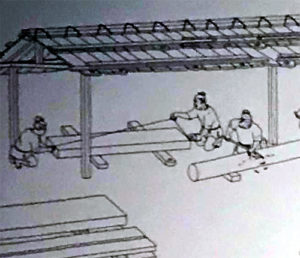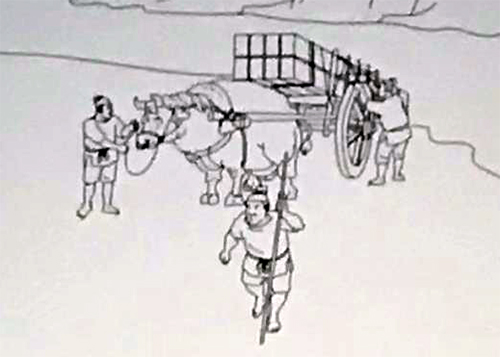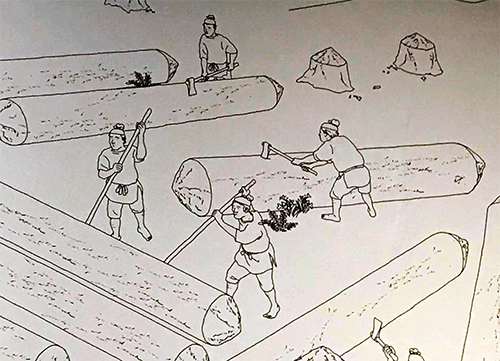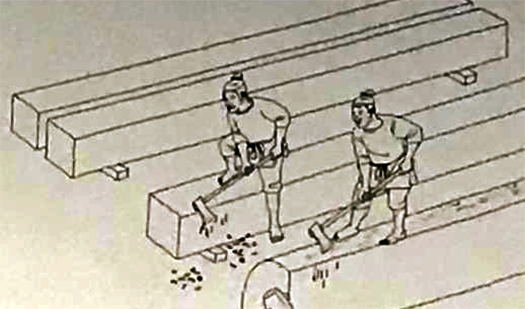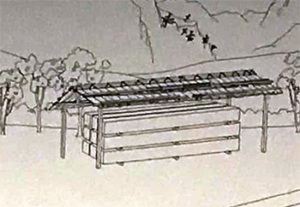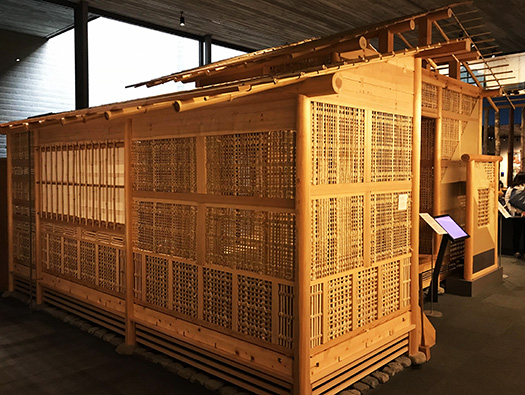
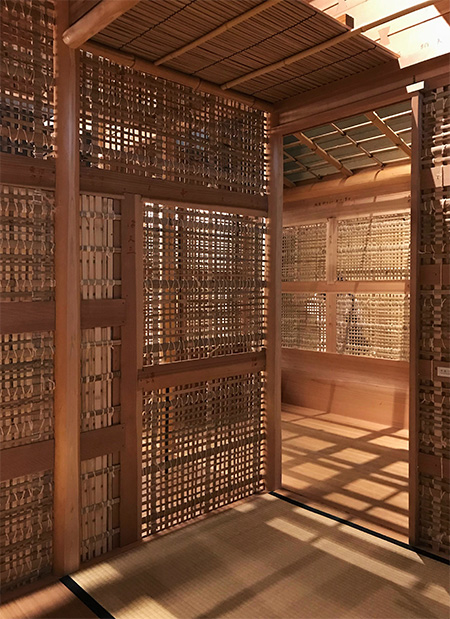
戦国から江戸時代へと元禄くらいまで日本人口は一気に倍増。
関ヶ原の慶長の頃1,300万くらいから3,000万を超えた。
この段階では歴史上最大の経済発展期だったことでしょう。
それにともなって全国で建築の需要は旺盛に高まっていった。
多様なそれらに対応して宮大工・数寄屋大工・家大工、
さらには彫刻大工、指物師などに専門化が見られていったとされる。
利休のような「設計者」の特異な建築要求に対して
その設計趣旨を咀嚼して現実化するのが大工の器量だったのでしょう。
利休がたとえば「自然のままの丸太」で床柱を立てて欲しい、と希望すれば
その意を呈して、どのように完成度を高めるか、工夫を凝らした。
設計者は「たぶんできるんじゃないか」とリクエストしてくるけれど、
実際に建てる大工にすれば、どう手順すれば可能かと叡智を尽くすことになる。
たぶん、利休のような設計者の先には茶室発注者として権力者もある。
技量の粋を凝らすに足る報酬も用意されていたことだろう。
利休の「わび・さび」という設計コンセプトからすれば、
出来上がる茶室は「草庵」だけれど技術に於いては最先端が要求された。
どうもこのあたりの「呼吸」に日本的審美眼・文化の独自性があると思う。
そういった感慨を持つ展示が竹中大工道具館のメイン「スケルトン茶室」。
たぶん初期の利休の頃には数寄屋大工というような職掌は存在しなかっただろう。
利休のビジネスに出入りしていた大工棟梁が
「まったく、メンドイ仕事ですなぁ(笑)」といいながら手掛けていたに違いない。
いちばん気心の知れた大工の技量を内心で見込んで受注したのだろう。
「ここに自然のままの材を床柱で建てる」
「う〜む、上と下で寸法が全然違うけど」
「そこをなんとか」
「それとこの丸太、途中で大きく曲がっていますぜ・・・」
「回りは塗り壁でいくからなんとかなるだろう」
「そうだけど、下地をどう仕上げるか、う〜む」
というような好き勝手を芸術家的に夢想する設計者と
困惑する一方、ムラムラと職人魂を刺激された大工のやり取り。
日本的建築文化の極限かとも思える数寄屋・茶室の創始期には
こんな設計施工の丁々発止があったのではないだろうか。
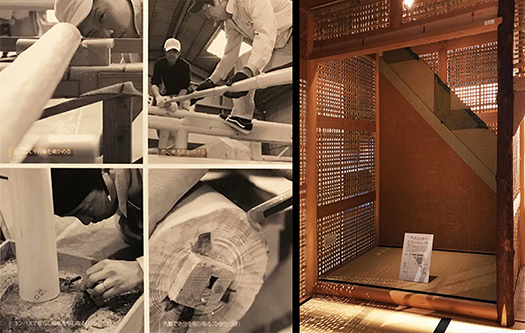
こういう創始期を経て、日本権力者たちの間では
文化精神の内容はよくわからないままに見栄・虚勢の一種として、
数寄屋茶室がもてはやされ、全国に拡散していく中で
専門職化した大工の技術分化も発生していったのでしょう。
江戸期という、とにかくも実現した平和発展の時代が生んだ建築文化。
権力者をうまく操る茶室設計者という刀の刃の上の踊り手。
実際に利休はその刃の上で命を落としたけれど、
そうして落命したことがむしろ「茶道」という文化領域確立に生きた。
素裸になって見せられる大工手業を見ていると
日本および日本人、というコア部分を強く思わされる次第です。
English version⬇
[The carpentry “skeleton tea room” / Japanese good house ㊳-15]
From the Warring States period to the Edo period, the Japanese population doubled at once from the Genroku period.
During the Keicho period in Sekigahara, it increased from about 13 million to over 30 million.
At this stage, it was probably the greatest period of economic development in history.
Along with this, the demand for construction has increased nationwide.
Miya carpenter, Sukiya carpenter, house carpenter,
Furthermore, it is said that specialization was seen in sculpture carpenters and joiners.
For the peculiar building requirements of “designers” such as Rikyu
It must have been the carpenter’s skill to chew the design purpose and make it a reality.
If Rikyu wants the floor pillars to be erected with, for example, “natural logs”
With that in mind, he devised a way to improve the perfection.
The designer asks, “Maybe I can do it,” but
If you are a carpenter who actually builds it, you will do your best to figure out how to do it.
Perhaps there is also a powerful person as a tea room orderer ahead of designers like Rikyu.
There would have been enough rewards to elaborate the skill.
From Rikyu’s design concept of “Wabi-Sabi”
The finished tea room is “Kusaan”, but the latest technology was required.
I think that “breathing” around here has the uniqueness of Japanese aesthetics and culture.
The exhibition with such emotions is the main “Skeleton Tea Room” at Takenaka Carpentry Tools Museum.
Perhaps there was no such job as a Sukiya carpenter in the early days of Rikyu.
The carpenter who was in and out of Rikyu’s business
He must have been working on it while saying, “It’s a crazy job (laughs)”.
It seems that the order was received with the inward expectation of the skill of the most well-known carpenter.
“Building pristine wood here with floor pillars”
“Hmm, the dimensions are completely different between the top and bottom.”
“Somehow there”
“And this log has a big bend in the middle …”
“Because the surroundings are plastered walls, it will be somehow managed.”
“That’s right, but how do you finish the groundwork?
With a designer who dreams of being an artist
While confused, the exchange between Muramura and the carpenter who stimulated the craftsmanship.
At the beginning of Sukiya / Tea room, which seems to be the limit of Japanese architectural culture
I think there was just a start and stop of such design and construction.
After such an early period, among Japanese powers
As a kind of appearance and vain without understanding the contents of culture
As the Sukiya tea room is touted and spread all over the country
It seems that the technological differentiation of carpenters who have become professionals has also occurred.
Architectural culture born from the Edo period, an era of peaceful development that was realized anyway.
A dancer on the blade of a sword called a designer who manipulates powerful people well.
Rikyu actually died on that blade,
Rather, the loss of life helped establish a cultural domain called “tea ceremony.”
Looking at the carpenter’s handiwork that is shown naked
I strongly feel the core part of Japan and the Japanese people.
Posted on 8月 14th, 2021 by 三木 奎吾
Filed under: 住宅マーケティング, 日本社会・文化研究 | No Comments »




